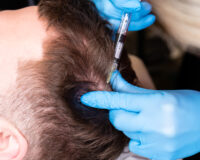The rapid expansion of the aesthetics specialty in the UK has seen an influx of a variety of aesthetic products from non-UK/European Union (EU) sources. Yet, the provenance of all these products is not readily clear.
Estimates suggest that over 160 dermal filler brands are currently available in the UK market. Despite not claiming a medical purpose, these products are potentially injurious to the patient if they do not meet relevant regulatory standards. The growing number of injectable brands with a lack of regulatory requirements makes it challenging for the aesthetic practitioner to be confident regarding compliance and safety. The issue is highlighted by the recent report of more than 400 ‘non-compliant’ dermal fillers being seized in a raid by the Medicines and Healthcare products Regulatory Agency (MHRA). Practitioners are responsible for ensuring the products they use are licensed, approved and intended for use in the UK.
In a Freedom of Information request, the MHRA reported approximately 200-400 adverse reactions annually to dermal fillers between 2019 and 2022, which in itself may be an underestimate due to under-reporting. It is alarming that there is no concrete information regarding the precise number of these products available in the UK market, nor is there a formal tracking of these adverse events.
This article will provide an overview of the regulatory framework involved in certifying reputable injectable products for use in the UK. Using regulated products helps improve patient safety, as these regulations should improve patient safety.
Regulatory classification of dermal fillers
In the UK, some dermal fillers, mesotherapy (e.g. skin boosters), threads and other injectable aesthetic products (e.g. polynucleotides) are classified as Class III medical devices under the UK Medical Device Regulations 2002 (SI 2002 No 618, as amended)5, which aligns with the EU Medical Devices Regulation (MDR) 2017/745. Dermal fillers, including those without a medical indication under recent regulation (Annex XVI products) are classified as Class III, the highest risk category, due to their invasive nature and the associated risks they pose (e.g. vascular occlusion and infection). Therefore, an aesthetic practitioner needs to be aware of the regulatory requirements with which dermal fillers should comply, and ensure that the injectable product they intend to use adheres to this checklist.
However, where no medical claim which would necessitate an MDR classification is made, many of these products are subject to much lower levels of regulation and, therefore, safety – a point first made by Sir Bruce Keogh in his 2013 review of the cosmetic sector. The MDR specifically outlines the regulatory requirements and obligations that manufacturers and UK distributors should adhere to when introducing a new dermal filler to the UK market, and which aesthetic practitioners need to be aware of before using unfamiliar aesthetic products.
The Medicines and Healthcare products Regulatory Agency (MHRA) has indicated that there are no current plans to reclassify dermal fillers to a lower risk category. The classification as Class III is consistent with international practices and reflects the invasive nature and potential risks associated with these products.
CE marking and UKCA marking
To receive a CE or UKCA mark, manufacturers must complete a formal conformity assessment proving the product meets safety and quality requirements.
This process includes:
- A clinical evaluation confirming safety and effectiveness
- Comprehensive risk management and mitigation plans
- A Quality Management System aligned with ISO 13485:2016 standards
The MHRA maintains a register of approved manufacturers and devices. Although this list may not include every detail, it’s a valuable reference for practitioners to verify compliance before using a new product.
The role of manufacturer and distributor
The MHRA distinguishes between manufacturers and distributors based on their roles in the supply chain and the regulatory requirements they must meet. Manufacturers create or assemble products, whilst distributors handle their distribution, storage and transportation. However, both parties must meet the MHRA regulatory oversight to the same degree, ensuring they meet specific quality standards and safety requirements throughout the supply chain.
Understanding post-market surveillance
Whilst many manufacturers achieve the above, the MDR has significantly strengthened its legal requirements that the manufacturer or UK distributor also establish and maintain a post-market surveillance (PMS) system to monitor the ongoing conformity, performance and safety of the dermal filler once on the market. This is a crucial public protection feature which allows the manufacturer and the MHRA to respond effectively to emerging concerns. These responses are typically in the form of Field Safety Notices or MHRA device safety information circulars which set out new information and the actions required.
To achieve this, a two-pronged approach is taken. When an adverse event has, (or may have), occurred, practitioners and members of the public can report it through the MHRA’s Yellow Card Scheme. This provides the MHRA with up-to-date data from which it can identify previously unknown risks, and work with the manufacturer to take corrective action where necessary. In parallel to this, the manufacturer has to be able to collect and review data from post-market clinical follow-up (PMCF) and then report these, together with adverse events to the MHRA. Furthermore, the manufacturer or distributor needs to be able to implement any preventive or corrective actions when required.
Manufacturers must also produce Periodic Safety Update Reports (PSURs) and trend reports, summarising surveillance data and actions taken.18 The MHRA further stipulates that manufacturers and distributors have to report death or serious deterioration in health within 10 days of the event and events that could have led to death or serious deterioration within 30 days. Therefore, the aesthetic practitioner should ensure that the manufacturers of the products they use have appropriate PMS systems in place, and where adverse events arise with a product, that this is reported both directly to the manufacturer and to the MHRA
Instructions for use and unique device identification
The practitioner must check that the aesthetic product complies with the labelling and instructions for use (IFU) because, if this is omitted or is not in English, it would suggest the product is not compliant. The labelling and IFU must comply with regulatory standards, providing clear and comprehensive information to ensure the safe and effective use of the device. This includes a description of the device, its intended use, instructions for proper use, storage and handling, information on potential risks and side effects and, importantly, batch number and expiry date.
Recent evidence suggests that practitioners are not always familiar with the IFU’s contents, and in particular the intended use, leading to high-risk practice where a filler is unintentionally used off-label. This highlights the importance of the IFU as a regulatory and patient safety requirement, and the need for practitioners to undertake their due diligence in this respect.
Furthermore, manufacturers are obliged to implement a unique device identification (UDI) system. This system works alongside new requirements for manufacturers, importers and distributors to enhance product identification, traceability and safety. These critical components are particularly targeted in field safety correction actions during post-market surveillance activities.
Preserving safety and legitimacy
There are now legions of injectable aesthetic products entering the UK market, yet the aesthetic practitioner community is not always entirely clear about their regulatory status, provenance and safety. Whilst the MDR may not apply to the entire spectrum of aesthetic injectable products, patient safety is ultimately the responsibility of the practitioner. Practitioners should, where possible, choose regulated medical devices over products not regulated by the MHRA, and they should undertake the due diligence required to confirm this.
In the absence of clarity in this sector, it falls upon us as healthcare professionals to apply appropriate standards. Whilst reputable manufacturers do ensure that they adhere to these quality standards and help by making it easier for the aesthetic community to check that their products comply, many do not. Thus, it becomes incumbent on the practitioner to ensure the appropriate safeguards are in place, and to report non-compliant products to the MHRA.




